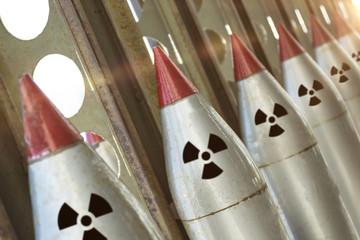
TLDR: President Eisenhower’s “Atoms for Peace” speech, delivered during the early years of the Cold War, addressed a pressing concern – the potentially catastrophic use of nuclear weapons. Eisenhower’s articulation of the risks and his proposition for a shared solution contributed to setting a path towards nuclear peace.
So What? His speech led to the creation of the International Atomic Energy Agency. Most importantly, no large-scale nuclear weapons have been used since World War II, making it one of the most beneficial speeches in human history.
In 1953, President Dwight D. Eisenhower delivered a speech known as “Atoms for Peace.” This influential address aimed to alleviate public concerns about nuclear war and demonstrate the United States’ commitment to pursuing peace. Eisenhower presented a framework for the peaceful utilization of nuclear technology, ultimately leading to the establishment of the International Atomic Energy Agency.
It was one of the most important speeches in human history, as it gained global agreement to prevent nuclear war – and it remains relevant today, as we face renewed nuclear threats. Let’s explore the effective communication techniques Eisenhower employed to convey his powerful message.
Sticking to a Structure
Given that Eisenhower’s audience was the global community, with his message to be translated into numerous languages, he adhered to a specific structure in his speech. The speech was composed in advance of its delivery, taking into account that television was still an emerging medium, while radio was considerably more widespread.
Additionally, a significant number of people would encounter the speech through newspapers rather than witnessing or listening to it live, so maintaining a structured format was beneficial. Eisenhower crafted his address as a persuasive appeal, with the goal of garnering global endorsement for his ideas.
Establishing His Track Record
To make his appeal more persuasive, Eisenhower highlighted his own efforts to prevent war and promote peace amidst the emergence of nuclear technology. He expressed support for the United Nations’ peace initiatives while emphasizing the grave dangers posed by nuclear weapons. By establishing credibility, Eisenhower gained the trust and attention of his audience.
Outlining His Plan in Detail
Eisenhower’s speech has two primary objectives: to alleviate fears of a nuclear apocalypse, and to propose a solution to the dilemma of rival nations possessing nuclear weapons, which could lead to mutual devastation on an unprecedented scale.
Eisenhower is unequivocal about his intentions. He introduces his plan by stating, “I therefore make the following proposal.” He endorses a UN plan to form an international atomic energy agency. This agency would receive a portion of nuclear material from nations possessing nuclear capabilities, both for security purposes and for exploring its potential beneficial uses, including power generation.
Eisenhower’s endorsement of this proposition was instrumental in the establishment of the International Atomic Energy Agency in 1956, which governs nations with “fissionable material” able to construct and operate nuclear power plants. Today, most developed nations possess nuclear energy production capabilities, albeit with lingering safety concerns after several notable incidents involving system failures.
To date, no nation has deployed large-scale nuclear weapons against each other (although smaller, more tactical nuclear weapons have been utilized). Eisenhower played a crucial role in safeguarding global peace and security during a period marked by high tension between the Soviet Union and the West.

Leveraging Emotions
Eisenhower used a technique in his speech called pathos, which is all about speaking to people’s feelings. He talked about how scared many people were that nuclear weapons could be used in anger, and said that this fear was real unless everyone worked together to prevent it.
But he also talked about hope, imagining a better world where nuclear technology makes people safer and richer. Speaking to these feelings made his speech stronger and was a key part of it.
Comparing Different Views
Eisenhower made his speech stronger by putting different views side by side. This made his points stand out and helped explain what he meant. He said, “It is with the book of history, and not with isolated pages, that the United States will ever wish to be identified.”
He followed this with two more examples: “My country wants to be constructive, not destructive. It wants agreements, not wars, among nations.”
Great communicators tell people what they do want, not just what they don’t want. Eisenhower gave the world both.
Through this speech, Eisenhower led the world into a time when atomic energy was used in a good and peaceful way, even as nuclear weapons got stronger and more countries had them. It was an incredibly important speech for the destiny of humankind.
As communicators, we can use some of the same techniques to make change with our words, and find powerful ways to make the world better.
Words can change the world. If you need help creating powerful content for your company or brand, you can try our award-winning platform for free.
